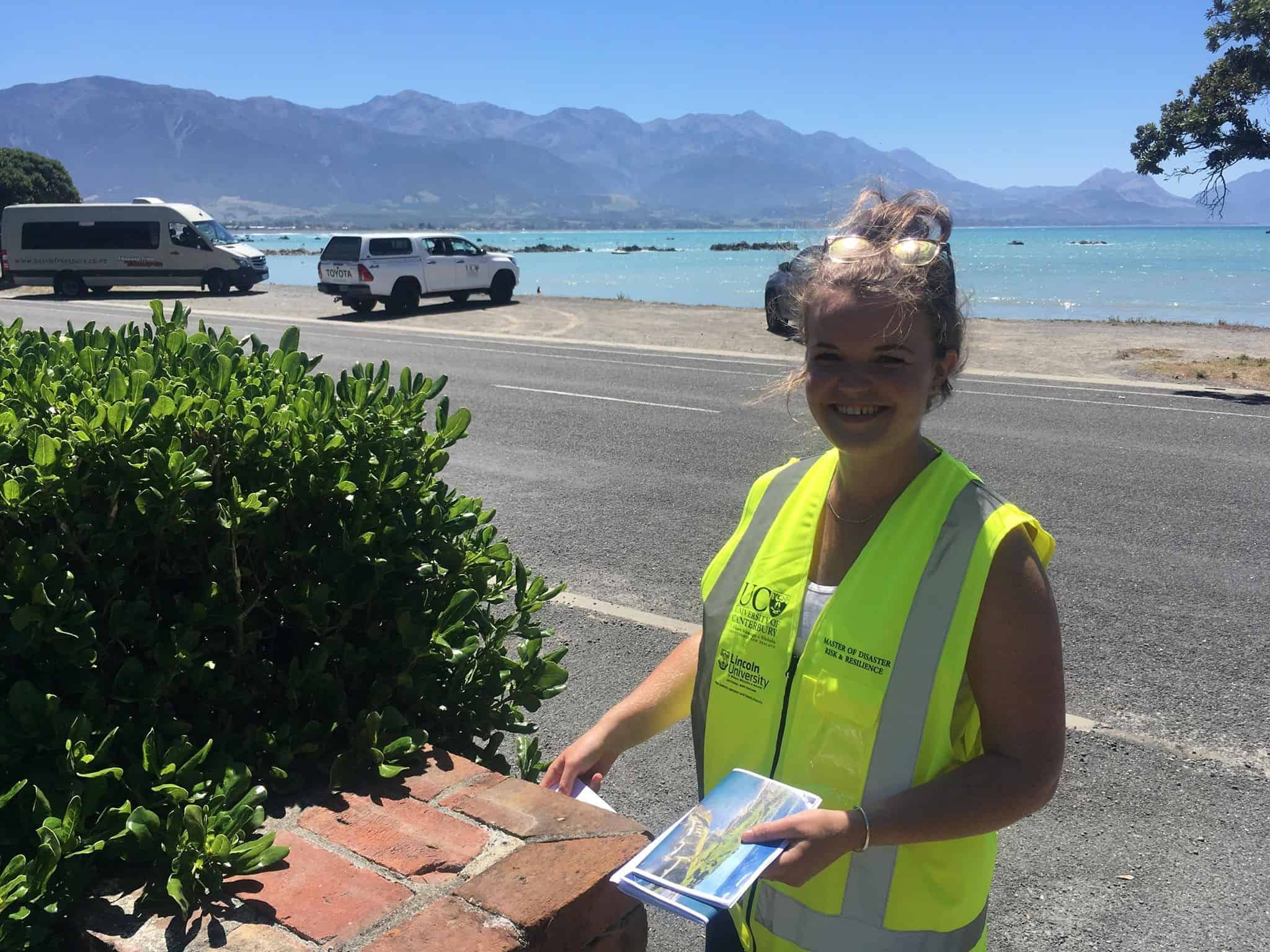Student profile: Laura Tilley
27/03/2019
Understanding community evacuation dynamics following the 2016 Kaikōura earthquake and tsunami
 A bit about me
A bit about me
My passion for learning about multi-hazard disaster risk and resilience began when I was nearing the end of my undergraduate degree in physical geography at the University of Canterbury. Having experienced the 2010/2011 Canterbury Earthquake Sequence (CES), I wanted to explore how disasters such as the CES and the 2016 Kaikōura earthquake impact people and places, and how we can build resilience into communities so that they are better prepared for future hazard events. This led me to enrol in the Master of Disaster Risk and Resilience (MDRR) programme at the University of Canterbury.
Since completing my master’s I have had exciting opportunities to apply the wide range of skills I learnt during the MDRR programme. In 2018 I worked at GNS Science as a research assistant on the RiskScape project. Since finishing that summer internship at GNS, I have spent the last year working as a graduate advisor in the Hazard Risk Management team at the Ministry of Civil Defence & Emergency Management, whilst working on my thesis project.
I also love pizza, wine and puppies.
My project
My project was scoped and requested by Environment Canterbury and Kaikōura District Council Emergency Management as part of ongoing collaborative research supporting recovery in the Kaikōura District following the 2016 earthquakes. I have the awesome opportunity to work with local emergency management, hazard analysts and the Kaikōura community to better understand evacuation dynamics of the tsunami risk which followed the 2016 Kaikōura earthquake and tsunami.
The aims of my research are to:
- Understand the risk to population and relevant assets exposed to tsunami hazard in Kaikōura
- Develop an optimal evacuation model for emergency managers and the Kaikōura community
- Utilise evacuation modelling to inform evacuation decision-making in planning and practice
The end goal of my project is to inform development of an optimal tsunami evacuation plan for emergency management and the Kaikōura community using agent-based modelling. Agent-based modelling will allow me to apply specific ‘rules’, based on information provided by the community, to represent realistic evacuation behaviour that was experienced during the 2016 Kaikōura event. I hope my research will increase community readiness and response and ensure safe and efficient evacuations for future tsunami hazards.
My project is a collaboration between the Resilience to Nature’s Challenges Rural research programme, and a Natural Hazards Research Platform project called ‘Quicker and safer tsunami evacuations through agent-based modelling’, led by William Power.
Next steps
Recently, I asked for the community’s help to understand their evacuation response and tsunami preparedness. I distributed 1000 surveys around the Kaikōura township and am now processing the amazing response. Once I have finished processing the surveys I will use the information provided by the community to help inform the tsunami evacuation model. My project is due to be completed in 2020.
The awesome supervision team helping me on this project are: Assoc Prof Tom Wilson (UC), Dr Matthew Hughes (UC) and Dr Sarah Beaven (UC), with support from ECan, Kaikōura District Council Civil Defence and GNS Science.




